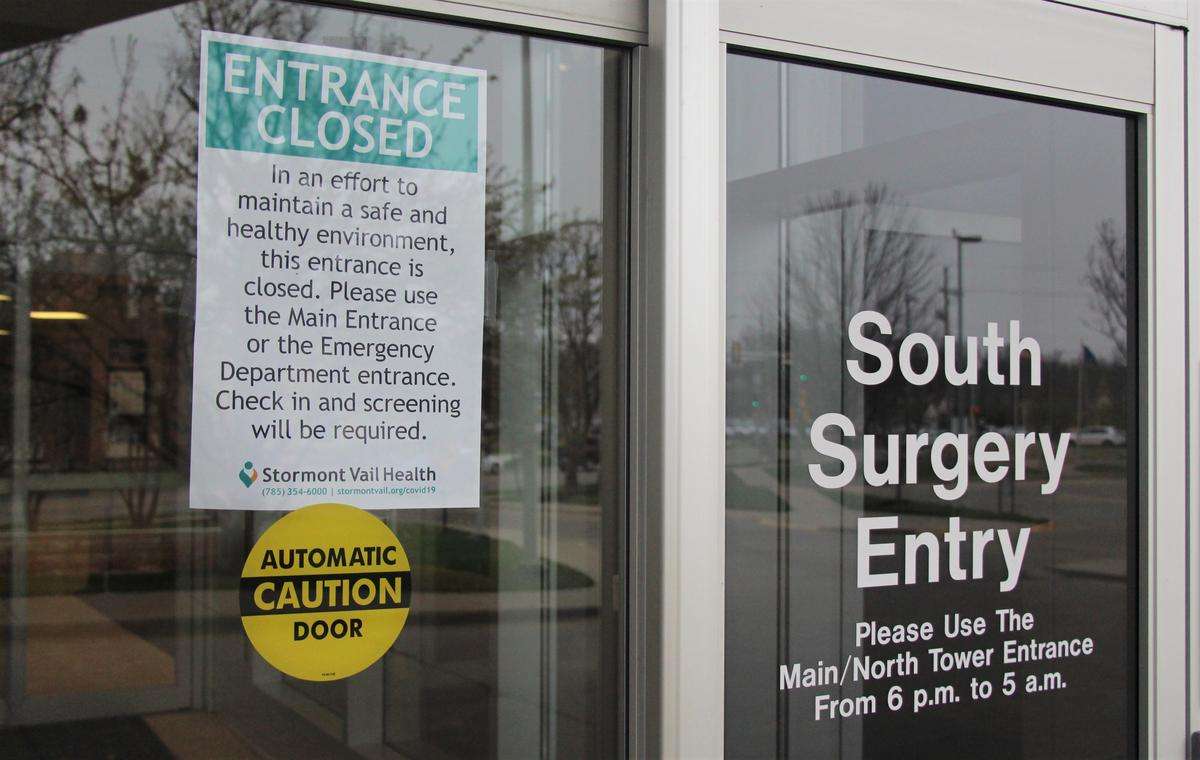
By CELIA LLOPIS-JEPSEN
Kansas News Service
Dr. Joe Meier’s hospital in Wilson County has 15 beds, no intensive care unit and one ventilator. Two of his neighboring counties in southeast Kansas have no hospital at all, and another two have no ICU either.
So Meier has a plea to the residents of his region: Stay home.
"It's not a matter of 'if' (COVID-19) is going to hit here,' he said. "It’s a matter of when."
Harvard University researchers looked at nine scenarios for how many Americans could catch COVID-19, and how fast. Kansas, it turned out, could only handle the milder scenarios. More moderate or severe situations would overload the state’s hospitals without dramatic steps — such as clearing hospitals of other patients and convincing the public to shelter in place.
As of Thursday afternoon, Kansas had about 200 confirmed cases of COVID-19, though the true number of people carrying the bug is unknown. State officials have said at times that they expect to see cases double every three or four days.
Staff at Wilson Medical Center are preparing to run an ad hoc ICU and convert spaces used for other purposes into coronavirus wards. The hospital is ordering more ventilators, which are needed to help severely ill COVID-19 patients breathe, but those could take a month or more to arrive.

“If Wichita becomes full and Topeka becomes full and Kansas City is full,” Meier said, “we're going to have to take care of them whether we have ICU beds or not.”
While most cases of the new coronavirus are mild, about one in five people become sick enough for hospitalization. If too many need that level of care at once, Kansas would need field hospitals. Facilities could have to ration ventilators and other equipment, as has happened elsewhere.
“Everybody has a role to play in terms of slowing the spread,” said Thomas Tsai, a professor at the Harvard Global Health Institute, which produced the study.
But the country’s window of opportunity is closing, he added. Strict social distancing is needed to avoid the worst-case scenarios and buy time for hospitals that are waiting on equipment and protective gear, and training staff on handling COVID-19 patients.
There’s a big difference, for example, between 20% of the U.S. catching COVID-19 over the next 18 months versus 40% in a year or 60% in half a year.
Harvard’s scenarios took into account likely hospitalization rates and how full hospitals already were.
Health care facilities in the Kansas City metro and surrounding areas that depend on it — what’s known as a hospital referral region — could handle only the mildest of Harvard’s scenarios.
That’s a situation in which the disease hits 20% of the 2.6 million people over the next year-and-a-half. Anything beyond that, and the region’s hospitals would overflow.
The vast Wichita referral region (population 1.3 million, including west and southeast Kansas) could handle up to a 40% infection rate over a year-and-a-half. The Topeka referral region (population 460,000) could handle a 20% infection rate over a year or year-and-a-half.
Kansas didn’t appear ready, according to the researchers’ findings, for higher infection rates and swifter spread. Even if hospitals had no other patients, there wouldn’t be enough beds in the state for a 40% infection rate over six months.
Hospitals have tapered down or shuttered non-emergency care to make space and the state’s main population centers are under stay-home orders. Kansas health secretary Lee Norman urges the rest of the state to shelter in place, too.

Kansas has asked the federal government for 100 more ventilators from a national stockpile, Norman said Wednesday, and may turn to machines meant for sleep apnea to help COVID-19 patients breathe. To address a looming shortage of face masks, it’s trying to get ultraviolet lights that would let health workers sterilize and reuse the items several times.
The state is also scouring options for temporary bed space; in other parts of the U.S., officials are turning to everything from soccer fields to closed hospitals.
Norman expected to know more soon about the state’s risks for running out of bed space and its options to repurpose existing buildings if needed.
“As much as it seems like ‘Oh, well, we’ll call in the National Guard and set up tents,” he said, “that's hard. We would much rather move into a built environment that was built for patient care, that has (ventilator) gases and all the safety features.”
In Topeka, Stormont Vail Health swiftly renovated 16 rooms, adding to 31 that were already equipped with the right air systems to handle COVID-19 patients. It may renovate another 16 rooms, CEO and physician Robert Kenagy said.
His hospital is also turning one of its clinics into an acute respiratory location to screen and care for suspected COVID-19 patients more efficiently and safely.
“We believe that we will be able to handle what's coming,” Kenagy said, if Kansans take social distancing seriously. “It is vitally important. This is our one opportunity to dampen the effect of the pandemic.”
Celia Llopis-Jepsen reports on consumer health and education for the Kansas News Service. You can follow her on Twitter @celia_LJ or email her at [email protected].





